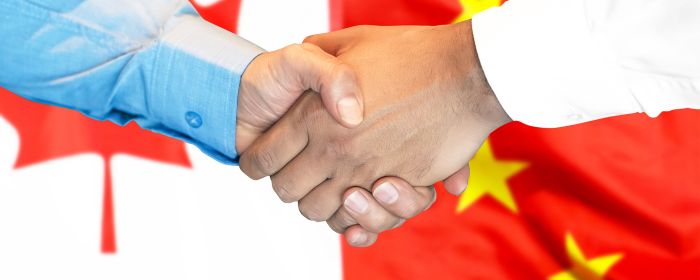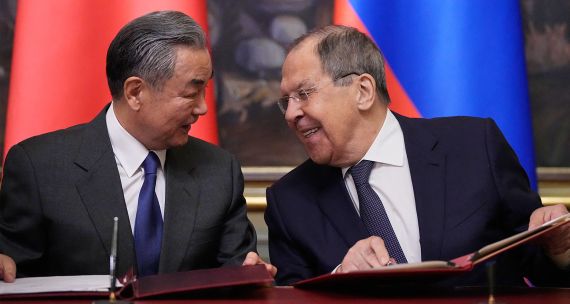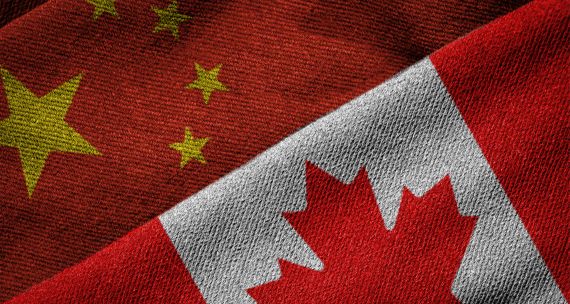Relations between Canada and China are at a difficult juncture, and the rippling effects of worsening diplomatic ties have reached provinces and municipalities, which have traditionally distanced themselves from foreign policy. In January 2019, Québec City Mayor Régis Labeaume cancelled a scheduled trip to visit Québec’s sister city of Xi’an over the detention of Canadians Michael Kovrig and Michael Spavor in China. In January 2020, citing human rights concerns, the city council of Victoria, British Columbia voted to abandon plans to celebrate the 40th sister city anniversary between Victoria and Suzhou, a significant move for China’s first sister city in Canada.
Decisions by Québec City and Victoria reflect broader challenges for city twinning programs between Canada and China as bilateral relations worsen. Scaling down twining activities, however, is not necessarily the answer to these challenges. The COVID-19 pandemic has shown that sister city connections can be utilized for essential supply procurement during crises. In late June, Oshawa received 30,000 masks and 500 protective gowns from its sister city of Xinwu District, Wuxi, adding to the growing list of Canadian cities that have received similar donations from Chinese twinning partners. Twinning programs, managed by municipal officials and civilians with little role in foreign policy, can also be vital channels of educational, cultural, and business engagement when relations between central governments sour. The answer is not less twinning but different twinning – ways of twinning that maintain people-to-people ties but avoid unexamined endorsements of Beijing’s official policies. To get there, let’s first look at twinning between Canada and China, and then examine Japan’s twinning program with China.
Canada-China twinning: sporadic and top-heavy
According to data collected by the Asia Pacific Foundation of Canada, Canada has 49 sister city relationships with China as of March 2020. As the graph below shows, most of them have been inactive over the past five years.
Activities held by sister cities include activities that involve government officials, which include official visits and trade missions, and activities that don’t, which include events featuring students, artists, and other citizens. Most engagements between Canadian and Chinese sister cities have involved visits by government officials from either side. Engagements involving groups outside of government and business are few. As shown in the graph below, on average across the past five years, each Canada-China pair had each year a 5.7 per cent likelihood to engage in non-government-involved activities, compared to 14.3 per cent likelihood for government-involved activities.
In the current context of diplomatic acrimony, official visits are particularly controversial because they can be seen by the Canadian public as an endorsement of the Chinese government or its policies. The public and political backlash to Nova Scotia premier Stephen McNeil’s 2019 trip to China is the latest example. As Canadian public opinion on China trends downward, officials will likely continue to face blowback when interacting with Chinese counterparts. Beyond the optics, twinning activities involving officials can also have substantive implications. Regulations in China on cities’ twinning activitiesstate that officials on twinning duties must adhere to and facilitate Beijing’s overall foreign policy objectives while making connections with ‘local decision-makers.’ In addition, government delegations from Chinese cities during twinning activities often include officials with leadership roles in the United Front Work Department, a party organ whose foreign influence campaigns are increasingly coming under scrutiny in Canada.
The bottom line is that the confluence of low activity and high ratio of official-led engagement in Canada-China twinning makes it vulnerable to domestic and international politics, undermining its value during times of turmoil. Commentators may object that Chinese cities may simply prefer higher levels of official involvement, and that there isn’t much that Canadian cities can change. But the case of Japan suggests otherwise.
Japan-China twinning as an alternative model
Japan’s twinning program with China is much larger than Canada’s. According to data compiled by Japan’s Council of Local Authorities for International Relations (CLAIR), there are 373 sister city relationships between Japan and China. Within the set, 32 Chinese cities have sister city ties of varying levels of activity with both Canada and Japan, which translates to 32 Canada-China ties and 58 Japan-China ties (there are more Japan-China ties because some Chinese cities have multiple Japanese twins). When twinning with these 32 Chinese cities, Canadian and Japanese officials would be dealing with the same offices. This provides an additional measure of control and makes them suitable for a brief comparative analysis on how Japanese cities do twinning differently.
In terms of activeness, the Canadian sample doesn’t deviate much from overall Canada-China twinning. Most ties aren’t active over the past five years. The Japanese sample, as the graph below shows, is much more active.
Equally relevant is the nature of twinning engagements. As discussed earlier, twinning activities can involve government personnel, but they don’t have to – activities such as student exchanges, for example, often achieve a higher profile in the local community without involving travel by government officials. Comparing twinning activities for 32 Canada-China relationships and 58 Japan-China relationships from 2015 to 2019, we found that on average across the past five years, each Canada-China pair in the sample each year had a 6.9 per cent likelihood to engage in non-government-involved activities, while each Japan-China pair in the sample had a 43.8 per cent likelihood to do the same. That is, in each year, a Japan-China pair is more than five times more likely to engage below the government level than a Canada-China pair with the same Chinese partner city.
The higher level of regular, non-government twinning activities between Japan and China has two positive effects. First, lower levels of political scrutiny over engagements at the non-official level allows twinning to continue during times of diplomatic tension between the two countries. Second, the planning and co-ordination of events such as the exchange of students, athletes, and artists necessitate the involvement of community members. To the extent these events are held often, they lead to sustained organizational and popular support, which is critical for twinning programs to survive leadership changes at the municipal level.
These effects can be observed at the aggregate level. Measured by the number of annual twinning exchanges, the lowest point of Japan-China twinning in recent years in terms of annual exchanges occurred in 2013. The dip corresponds with a diplomatic spat over the disputed territories of Senkaku/Diaoyu Islands that started in the previous year. But even at its lowest point, Japan-China twinning remained vibrant, and it bounced back quickly in the following year. In 2020, after another year of low twinning activity in 2019, Japanese cities were the first ones to reach out to their Chinese sister cities to offer donations of medical supplies after COVID-19 first spread in Wuhan. The Chinese cities soon returned the favour when the virus reached Japan. Meanwhile, the central government in Tokyo adopted foreign policy positions that could draw Beijing’s ire, offering support for Taiwan’s WHO bid and Hong Kong’s autonomy from mainland China. With Xi Jinping’s state visit to Japan on the horizon, Beijing’s response to these positions has been relatively muted.
Making the shift
City twinning programs can typically claim a degree of immunity from disputes between central governments, given the limited jurisdiction of municipal governments. That seems to no longer be the case for Canada-China twinning relationships. But as Japan-China twinning shows, there is a way out: a healthier Canada-China twinning program is achievable by making sister city relationships more active through engagements at the non-official level.
Change, of course, isn’t easy. International travel is the backbone of twinning, and the vast physical distance between Canada and China means that maintaining active sister city relationships is much more costly. While funding options outside of city budgets can be explored, fundraising is a significant undertaking on its own. Other solutions include exchange programs that require participants to pay their own expenses and digital and web-based twinning activities such as virtual exhibitions and online classroom projects.
Canada-China twinning may never reach the level of Japan-China twinning, but at this critical juncture in the relationship between Ottawa and Beijing, a shift in direction is needed, driven by the recognition that a different kind of twinning is possible – one that doesn’t depend on people in positions of power to move the relationship forward.





